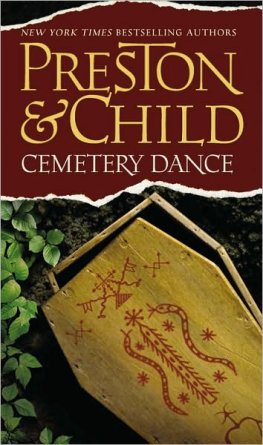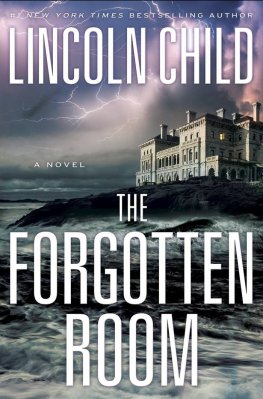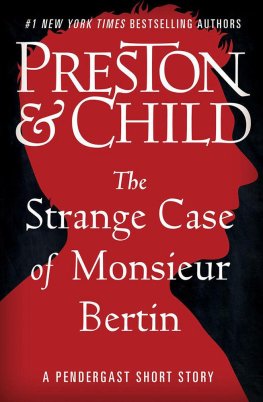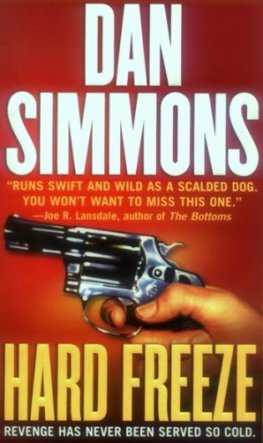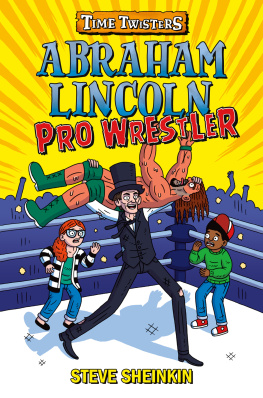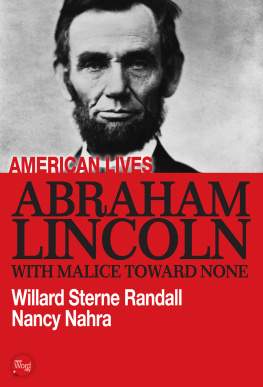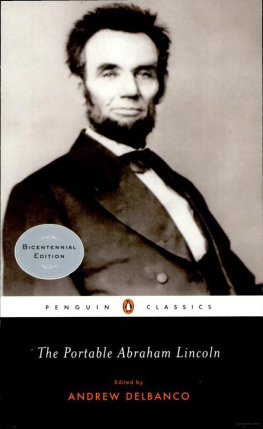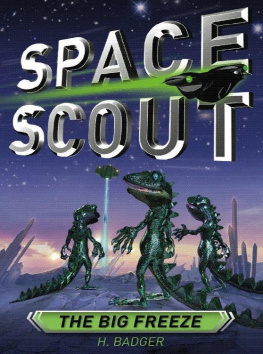Lincoln Child - Terminal Freeze
Here you can read online Lincoln Child - Terminal Freeze full text of the book (entire story) in english for free. Download pdf and epub, get meaning, cover and reviews about this ebook. year: 2009, publisher: Doubleday, genre: Detective and thriller. Description of the work, (preface) as well as reviews are available. Best literature library LitArk.com created for fans of good reading and offers a wide selection of genres:
Romance novel
Science fiction
Adventure
Detective
Science
History
Home and family
Prose
Art
Politics
Computer
Non-fiction
Religion
Business
Children
Humor
Choose a favorite category and find really read worthwhile books. Enjoy immersion in the world of imagination, feel the emotions of the characters or learn something new for yourself, make an fascinating discovery.

- Book:Terminal Freeze
- Author:
- Publisher:Doubleday
- Genre:
- Year:2009
- Rating:4 / 5
- Favourites:Add to favourites
- Your mark:
- 80
- 1
- 2
- 3
- 4
- 5
Terminal Freeze: summary, description and annotation
We offer to read an annotation, description, summary or preface (depends on what the author of the book "Terminal Freeze" wrote himself). If you haven't found the necessary information about the book — write in the comments, we will try to find it.
Terminal Freeze — read online for free the complete book (whole text) full work
Below is the text of the book, divided by pages. System saving the place of the last page read, allows you to conveniently read the book "Terminal Freeze" online for free, without having to search again every time where you left off. Put a bookmark, and you can go to the page where you finished reading at any time.
Font size:
Interval:
Bookmark:
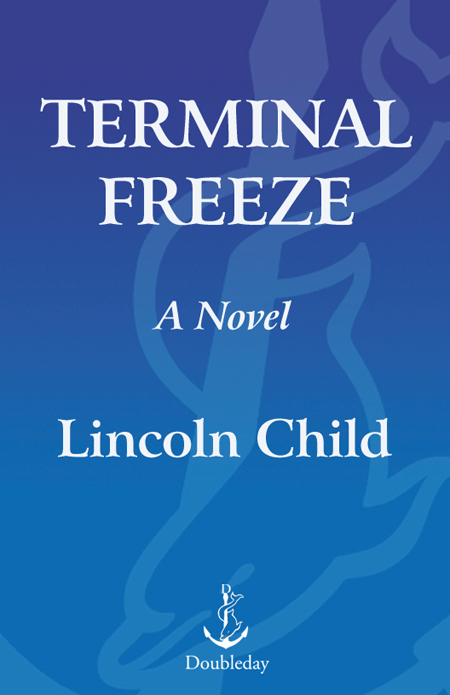
ALSO BY LINCOLN CHILD
DEEP STORM
DEATH MATCH
UTOPIA
WITH DOUGLAS PRESTON
THE WHEEL OF DARKNESS
THE BOOK OF THE DEAD
DANCE OF DEATH
BRIMSTONE
STILL LIFE WITH CROWS
THE CABINET OF CURIOSITIES
THE ICE LIMIT
THUNDERHEAD
RIPTIDE
RELIQUARY
MOUNT DRAGON
RELIC

To Veronica
As Terminal Freeze made the long journey from concept to printed reality, many people generously lent their time and expertise. J. Bret Bennington, PhD, of the Department of Geology at Hofstra University, helped me gain a better understanding of paleoecological field-work and principles. Timothy Robbins provided a window onto the nuts-and-bolts details of documentary filmmaking. (I hasten to add that the particular peccadilloes of Terra Prime, Emilio Conti, et al. are completely of my own devising.) William Cors, MD, assisted with several medical aspects of the story. My father, William Child, PhD, former chemistry professor and associate dean of Carleton College, offered invaluable insight into crystalline structures and other chemical matters. Special Agent Douglas Margini once again helped with firearms details. And my cousin Greg Tear listened patiently and offered his usual excellent advice.
I would also like to thank my editor and friend, Jason Kaufman, for as always being an essential guiding light through the composition of this novel, as well as Rob Bloom and the many others at Doubleday for taking such good care of me. Thanks also to my agents, Eric Simonoff and Matthew Snyder, for fighting the good fight. Thanks to Claudia Rlke, Nadine Waddell, and Diane Mat-son for their various ministrations. An ice-cold Beefeater martini, extra dry, straight up, with a twist, to my writing partner, Doug Preston, for his many years of comradeship. His daughter Aletheia suggested a great twist. And last but most certainly not least, my thanks and gratitude to my family for their love and support.
In the early part of the twentieth century the Beresovka mammoth carcass was discovered in Siberia. Nearly intact, the animal was found buried in silty gravel sitting in an upright position. The mammoth had a broken foreleg, ev idently caused by a fall from a nearby cliff ten thousand years ago. The remains of its stomach were intact and there were grasses and buttercups lodged between its teeth. The flesh was still edible, but reportedly not tasty.
No one has ever satisfactorily explained how the Beresovka mammoth and other animals found frozen in the subarctic could have been frozen before being consumed by predators of the time.
J. Holland, Alaska Science Forum
At dusk, when the stars rose one by one into a frozen sky, Usuguk approached the snowhouse as silently as a fox. There had been a fresh snowfall that morning, and the village elder stared across the gray-white arctic desolation that ran away endlessly on all sides to a bleak and empty ice horizon. Here and there, ribs of dark permafrost jutted out of the snow cover like the bones of prehistoric beasts. The wind was picking up, and ice crystals stung his cheeks and worried at the fur of his parka hood. A scattering of surrounding igloos stood unlit, dark as tombs.
Usuguk paid no attention to any of this. He was aware only of an overwhelming sense of dread, of the rapid pounding of his heart.
As he entered the snowhouse, the small band of women gathered around the moss fire looked up at him quickly, their expressions tense, worried.
Moktok e inkarrtok, he said. It is time.
Wordlessly, they gathered up their meager tools with trembling fingers. Bone needles were returned to needle cases; skin scrapers and flensing ulus were slipped inside parkas. One woman, who had been chewing sealskin boots to soften them, bundled the boots up carefully in a threadbare cloth. Then they all rose, one after another, and slipped out the rough opening that served as a door. Last to go was Nulathe, her head bowed in fear and shame.
Usuguk watched as the caribou skin fell back over the opening, blotting out the view beyond: the lonely huddle of igloos, the desolate icescape stretching on across the frozen lake toward the failing sun. For a moment he stood, trying to forget the anxiety that had settled over him like a heavy cloak.
Then he turned away. There was much to doand little time to do it in.
Moving gingerly to the rear of the snowhouse, the shaman drew blankets off the top of a small mound of furs, exposing a box of polished black wood. Carefully, he placed the box before the fire. Next he removed a ceremonial amauti, folded with ritual care, from between the furs. Pulling the hooded parka over his head and placing it aside, he donned the amauti, its intricate fretwork of beaded tassels clattering faintly. Then he seated himself cross-legged before the box.
He sat for a minute, caressing the box with fingers wizened from years of fighting a hostile landscape. Next he opened it and removed one of the objects inside, turning it over and over, feeling its power, listening carefully for anything it might tell him. Then he returned it to the box. He did this with each of the objects in turn. All the while he was aware of the fear within him. It lay deep in his body's core like undigested blubber. He knew all too well what this thing they had witnessed, this awful portent, meant. It had happened only once before in the living memory of the People, scores of generations ago, although the storyhanded down from father to son before the snowhouse fireremained as portentous as if it had happened yesterday.
Yet, this time, it seemed so frighteningly out of proportion to the transgression that provoked it
He took a deep breath. They were all counting on him to restore peace, to bring the natural order back into balance. But it was an oppressive task. The People were so diminished that there had been but a tiny handful to pass on to him the old, secret knowledge. And even they were gone now, passed into the spirit world. Of nature's secret order, only he was left.
Reaching beneath the amauti, he drew out a handful of dried herbs and botanicals, carefully tied together with a slender stalk of arctic balsam. He raised it with both hands, then placed it on the fire. Clouds of gray smoke began to rise, filling the snowhouse with the smell of the ancient forest. Slowly and reverently, he took the objects out of the box and arranged them in a semicircle before the fire: the tusk tip of a rare white walrus, caught and killed by his great-great-great-grandfather. A stone the color of summer sunlight, shaped like the head of a wolverine. A caribou antler, cut rit-ualistically into twenty-one pieces, decorated in intricate patterns of tiny awl holes, each filled with ochre.
Last of all he withdrew the tiny figure of a man, made of reindeer skin, ivory, and blanket cloth. He laid the figure in the center of the semicircle. Then, putting his palms flat on the floor of the snowhouse and letting his chin sink to his chest, he bent low before it.
Mighty Kuukjuag, he chanted, Hunter of the Frozen Waste, Protector of the People. Withdraw your rage from us. Walk quietly again in the moonlight. Return to the way of peace.
He raised himself back to a sitting position. Then he reached out for the first object in the semicirclethe walrus tuskturning it clockwise to face the small figurine. Hand on the tusk, he half sang, half chanted the atonement prayer, asking Kuukjuag to soften his heart, to forgive.
Font size:
Interval:
Bookmark:
Similar books «Terminal Freeze»
Look at similar books to Terminal Freeze. We have selected literature similar in name and meaning in the hope of providing readers with more options to find new, interesting, not yet read works.
Discussion, reviews of the book Terminal Freeze and just readers' own opinions. Leave your comments, write what you think about the work, its meaning or the main characters. Specify what exactly you liked and what you didn't like, and why you think so.

